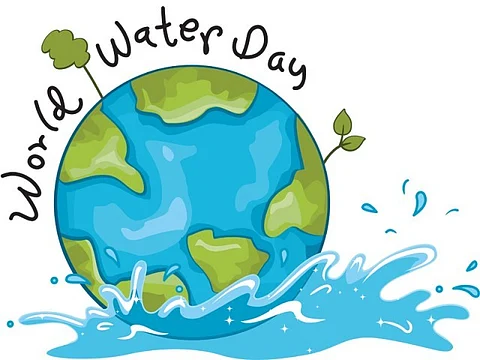
- Home
- Live Blog
- Breaking News
- Top Headlines
- Cities
- NE News
- Sentinel Media
- Sports
- Education
- Jobs

Friday was World Water Day. While the first World Water Day was observed in 1993, it is a day designated by United Nations to highlight the importance of fresh water. The UN’s basic intention behind observing World Water Day is to build public awareness and involvement in protecting water resources around the world. Additionally, this day is also used for advocating for the sustainable management of fresh-water resources. The theme for World Water Day 2019 is ‘Leaving no one behind’. This is an adaptation of the central promise of the 2030 Agenda for Sustainable Development; and, as sustainable development progresses, everyone on this planet must benefit. The focus theme this year also intends to encourage people to consider marginalised groups as these are often overlooked and discriminated against when they try to access safe water. It is worth noting that Sustainable Development Goal 6 (SDG 6) aims to ensure availability and sustainable management of water for all by 2030. That exactly is why, by definition, this means leaving no one behind. Looking back, one finds that the United Nations has considered various themes in order to generate increased awareness among the communities across the globe towards the importance of this particular commodity called fresh water that is increasingly becoming scarce and endangered. The theme in 2014 was ‘Water and energy’. In 2015 it was ‘Water and Sustainable Development,’ in 2016 it was ‘Water and Jobs’, in 2017 ‘Why waste water?’ and in 2018 ‘Nature for Water.’ Taking a closer look, one finds that billions of people across the globe are still living without safe water – in their households, schools, workplaces, farms and factories – and are struggling to survive and thrive. Marginalized groups – like women, children, refugees, indigenous peoples, differently abled people and many others – are very often overlooked as far as provisions for water are concerned. Sometimes they face discrimination too, as they try to access and manage the safe water they need. In certain states of India, people belonging to the so-called ‘lower castes’ are debarred from drawing water from community water sources like wells, ponds and even rivers. In some communities, water becomes ‘dirty’ if a person from a so-called ‘lower caste’ happens to touch the community water source, not to speak of utensils in which water is collected or stored. This was mostly found in northern and southern India, and one continues to once in a while read news items about people of ‘lower castes’ being discriminated, punished and ostracized for ‘touching’ community water sources that are considered exclusive privilege of so-called ‘upper caste’ communities. No wonder, this World Water Day is about tackling the water crisis by addressing the reasons why so many people are being left behind. Reports say that India is one country where about one billion people continue to live in areas where there is physical water scarcity. Among them, about 600 million people are live in areas of high to extreme water stress. India in fact is ranked towards the extreme bottom – 120 among 122 countries – as far as water quality index is concerned. Taking the entire globe into consideration, nearly four billion people live in water-scarce areas, where, for at least part of the year, demand exceeds supply. According to independent reports, this number of people living in water-scare areas is expected to go up to five billion in the next thirty years or so. In Assam and the Northeast, there is hardly any concern for protection and conservation of water and fresh-water sources. Nobody is bothered about the rivers, the lakes, the water-bodies, wetlands and the ground-water. It is indeed sad.